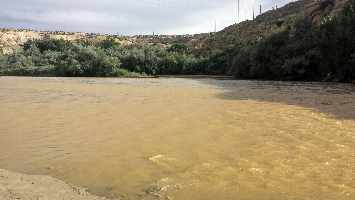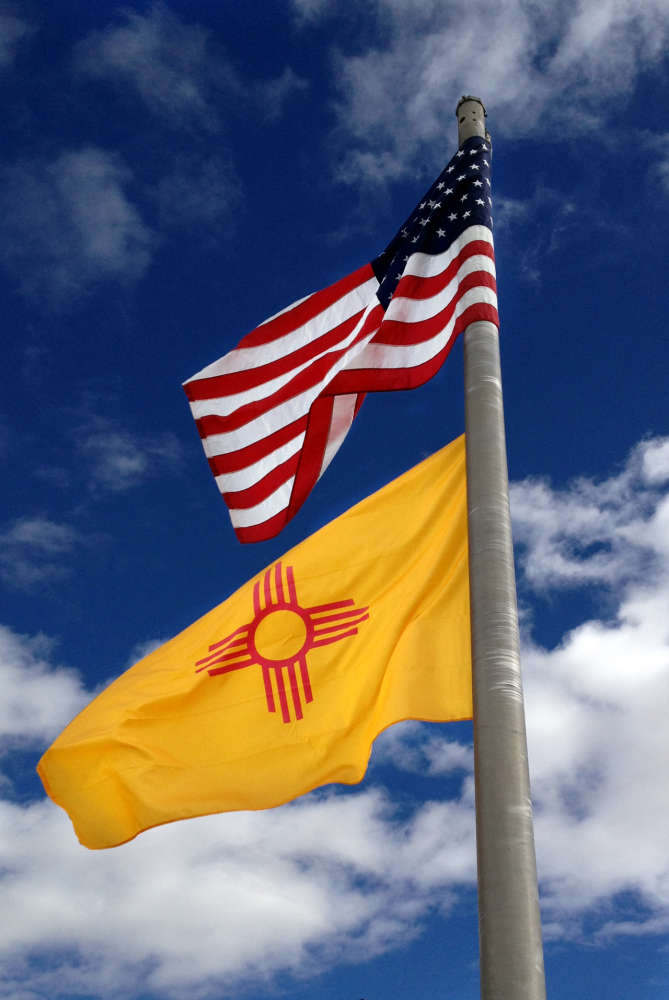
The states of Utah, Colorado, New Mexico, Southern Ute Tribe, and Navajo Nation today announced their Animas, San Juan Spring Runoff Preparedness Plan. The Plan participants share the Animas/San Juan Watershed and are joining forces to prepare for and monitor the melting of El Niño snowpack throughout the region. Monitoring during the spring runoff period is one of the necessary short-term needs for the multi-state and multi-tribe region that is in direct response to the Gold King Mine release caused by the US Environmental Protection Agency that occurred on August 5, 2015.
 From the New Mexico Environment Department:
From the New Mexico Environment Department:
The states of Utah, Colorado, New Mexico, Southern Ute Tribe, and Navajo Nation today announced their Animas, San Juan Spring Runoff Preparedness Plan. The Plan participants share the Animas/San Juan Watershed and are joining forces to prepare for and monitor the melting of El Niño snowpack throughout the region. Monitoring during the spring runoff period is one of the necessary short-term needs for the multi-state and multi-tribe region that is in direct response to the Gold King Mine release caused by the US Environmental Protection Agency that occurred on August 5, 2015.
“The San Juan and Animas rivers are still contaminated from last year’s toxic waste spill, and we expect it to get worse as the snow melts and the water level rises,” said New Mexico Environment Secretary Ryan Flynn. “Already some of our cities are experiencing the effects. In Farmington, for example, there has been a substantial increase in lead found in the Animas River at times of high flows and turbidity. At those times, the city draws its drinking water from reserves instead.”
Flynn continued, “By working together with neighboring states and tribes, we will be able to better monitor and respond to increased contamination. This collaboration continues our commitment to ensure that New Mexicans are protected from any long-term effects of the spill.”
New Mexico also fosters regional collaboration with the comprehensive Long-Term Monitoring Plan. “Eight months after the spill, the US Environmental Protection Agency has yet to fully implement their conceptual monitoring plan,” said Flynn. “We are hopeful, however, because we’ve brought the EPA along in our collaborative stakeholder process for the Spring Runoff Preparedness Plan; we are still working to bring them along for our comprehensive and collaborative Long-Term Monitoring Plan which we’ve been executing upon since last September. As the responsible party for the Gold King Mine Spill, EPA should not be attempting to regulate itself; rather they should pay the states and tribes to conduct independent long-term monitoring.”

 City Manager Mayes to Retire
City Manager Mayes to Retire
 One Dead after RV Fire in Flora Vista
One Dead after RV Fire in Flora Vista
 Lanier Announces 2026 run for NM Governor
Lanier Announces 2026 run for NM Governor
 2025 General Election Results
2025 General Election Results
 Bus Service to Link Farmington to Durango, Albuquerque
Bus Service to Link Farmington to Durango, Albuquerque
 Dineh Benally Pleads Guilty to Charges from Illegal Marijuana Farms
Dineh Benally Pleads Guilty to Charges from Illegal Marijuana Farms


